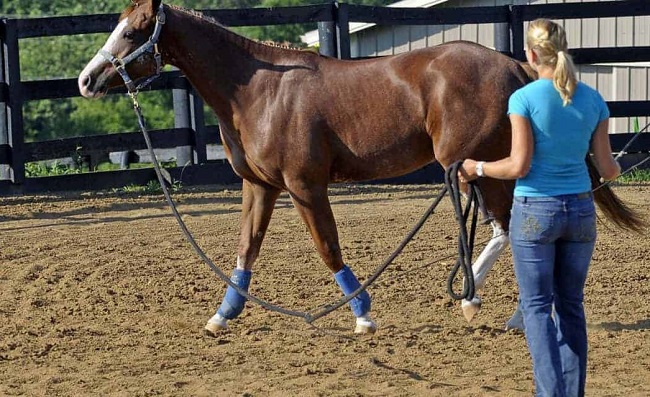
Equine behavior research is teaching us that the best way to teach an old pony a new trick is to reward them for positive behavior instead of punishing them for negative behavior. According to the results from a study in France, awarding horses for correct moves during training is more effective and has longer lasting results than coercing them with negative influences. It also strengthens the horse-human relationship generally.
The study, led by equine behaviorist Carol Sankey, involved 21 riding club ponies, aged 10 to 16. Sankey taught the ponies to back up on a vocal command (“Back”) without the use of reins or lead lines. The ponies were free-standing in an arena with Sankey, who stood in front of them. If the ponies did not step backwards on the first try, she would tap her foot. One group of ponies received positive reinforcement (grain pellets) when they took a step backwards. The other group received negative reinforcement (a whip shaken in front of their heads) when they did not take a step backwards. Each pony was trained for one to three minutes each day for five days. At the end of the five days, all the ponies had learned the command, but it took much longer for the negative reinforcement group to respond to the command. Every pony in the positive reinforcement group stepped backward by the second try, but that was only true for half the ponies in the negative reinforcement group. Cardiac assessments of the ponies showed that the negative reinforcement ponies had significantly increased heart rates during and even before training, revealing anxiety. “It’s clear that the ponies were anticipating a negative influence even before the training session started,” Sankey said.
True to Sankey’s other studies on equine behavior, the effects of positive and negative reinforcement during those five days stretched beyond the training ring. When the ponies were loose in an open paddock at the end of the training period, the positive reinforcement ponies were much more likely to approach Sankey. They stayed close by her eight times longer than the negative reinforcement ponies did, even though before the training period started, all the ponies were equally friendly with people. Even five months later, the negative reinforcement ponies stayed away farther and longer, not only from Sankey but from other humans as well. “Through these experiments it’s obvious that there’s no real advantage to using negative reinforcement when training horses and ponies,” Sankey said. “But with positive reinforcement, there is much to be gained for everyone.”
Related Articles & Free Email Newsletter Sign Up
4 Annual Vaccinations Your Horse Needs to Receive
How to Catch a Horse That Runs from You




Comment here